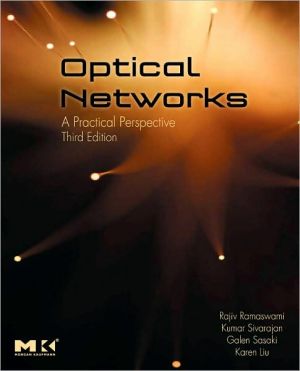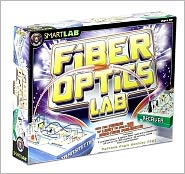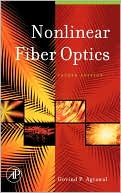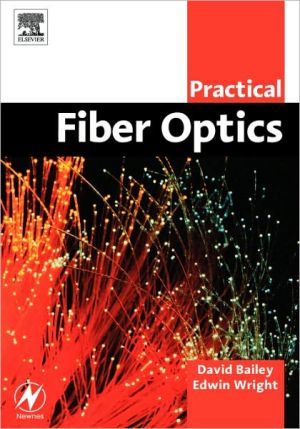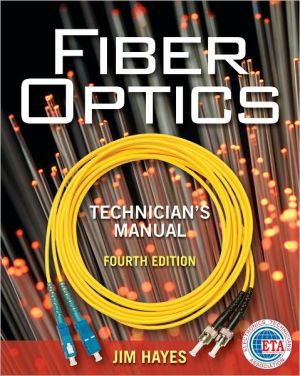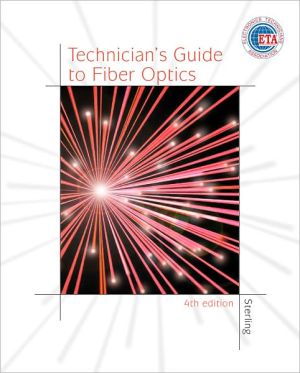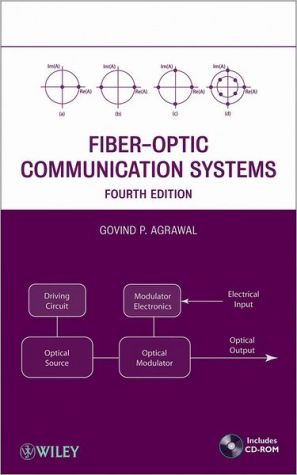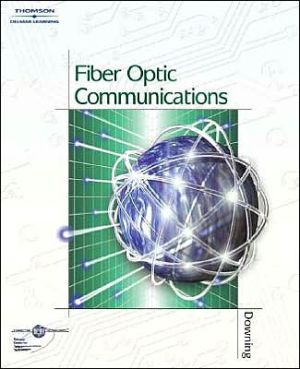Optical Networks: A Practical Perspective
The third edition of Optical Networks continues to be the authoritative source for information on optical networking technologies and techniques. Componentry and transmission are discussed in detail with emphasis on practical networking issues that affect organizations as they evaluate, deploy, or develop optical networks. New updates in this rapidly changing technology are introduced. These updates include sections on pluggable optical transceivers, ROADM (reconfigurable optical add/drop...
Search in google:
The third edition of Optical Networks continues to be the authoritative source for information on optical networking technologies and techniques. Componentry and transmission are discussed in detail with emphasis on practical networking issues that affect organizations as they evaluate, deploy, or develop optical networks. New updates in this rapidly changing technology are introduced. These updates include sections on pluggable optical transceivers, ROADM (reconfigurable optical add/drop muliplexer), and electronic dispersion compensation. Current standards updates such as G.709 OTN, as well as, those for GPON, EPON, and BPON are featured. Expanded discussions on multimode fiber with additional sections on photonic crystal and plastic fibers, as well as expanded coverage of Ethernet and Multiprotocol Label Switching (MPLS).This book clearly explains all the hard-to-find information on architecture, control and management. It serves as your guide at every step of optical networking— from planning to implementation through ongoing maintenance. This book is your key to thoroughly understanding practical optical networks.In-depth coverage of optimization, design, and management of the components and transmission of optical networks.Filled with examples, figures, and problem sets to aid in development of dependable, speedy networks.Focuses on practical, networking-specific issues: everything you need to know to implement currently available optical solutions. Booknews Although this text covers the transmission aspects of second- generation fiber optic networks, its focus is on the networking aspects, such as architectures, and control and management issues. Topics include components, dispersion, fiber nonlinearities, the modulation process, the physical layer design of transmission systems, wavelength routing, overlay virtual networks, and optical time division multiplexed networks. The authors assume an undergraduate- level knowledge of communication networks and probabilities. Annotation c. by Book News, Inc., Portland, Or.
\ \ Chapter 1: Introduction to Optical Networks\ Transparency\ A major feature of second-generation networks that relates to the circuit-switched lightpath service is that this type of service can be transparent to the actual data being sent over the lightpath once it is set up. For instance, a certain maximum bit rate or bandwidth might be specified, and the service may accept data at any bit rate and any protocol format. It may also be able to carry analog data.\ An example of a transparent network of this sort is the telephone network. Once a call is established in the telephone network, it provides 4 kHz of bandwidth over which a user can send a variety of different types of traffic such as voice, data, or fax. There is no question that transparency in the telephone network today has had a far-reaching impact on our lifestyles. Chapter 13 describes how transparency has become a useful feature of second-generation optical networks as well.\ The levels of transparency achievable in an optical network depend on several parameters of the physical layer, such as bandwidth and signal-to-noise ratios. If the signal remains in optical form from its source to its destination, a higher degree of transparency may be obtained. Even here, analog signals require much higher signal-to-noise ratios than digital signals. The actual requirements depend on the modulation format used as well as the bit rate. This is studied further in Chapter 5.\ However, in some cases, the signal may not be able to remain in optical form all the way to its destination and may have to be regenerated in between. This involves converting the signal from optical form to electronic form and back again to optical form. Having these electronic regenerators in the path of the signal reduces the transparency of that path. There are three types of regeneration techniques for digital data. The standard one is called regeneration with retiming and reshaping, also called 3R. Here the bit clock is extracted from the signal, and the signal is reclocked. This technique essentially produces a "fresh" copy of the signal at each regeneration Step, allowing the signal to go through a very large number of regenerators. However, it eliminates transparency to bit rates and frame formats, since acquiring the clock usually requires knowledge of both of these. Some limited form of bit rate transparency is possible by making use of programmable clock recovery chips that can work at a set of bit rates that are multiples of one another. For example, chipsets that perform clock recovery at either 2.4 Gb/s or 622 Mb/s are commercially available today.\ An implementation using regeneration of the optical signal without retiming, also called 2R, offers transparency to bit rates, without supporting analog data or different modulation formats [GJR96]. However, this approach limits the number of regeneration steps allowed, particularly at higher bit rates, over a few hundred Mb/s. The limitation is due to the jitter, which accumulates at each regeneration step.\ The final form of regeneration is 1R, where the signal is simply received and retransmitted without retiming or reshaping. This form of regeneration can handle analog data as well, but its performance is significantly poorer than the other two forms of regeneration.\ Competing Technologies\ The alternative to using second-generation optical networks is to continue developing the technologies underlying first-generation optical networks. This means increasing the transmission speeds on the fiber, as well as increasing the speeds, number of ports, and processing power of electronic switches. As transmission speeds increase beyond the few gigabits per second achieved today to several tens of gigabits per second, it becomes more and more difficult to perform all the switching and processing functions electronically. However, electronic switching is a mature technology highly suited for integration. Optical switching and routing, on the other hand, is a developing technology. Today, it is possible to incorporate circuit-switching, or crossconnect, capabilities in the network by using optical switches. However, as we will see later in this chapter and in Chapter 14, we are still far away from being able to offer optical packet switching at prices that will be competitive with electronic packet switching.\ Thus, second-generation optical networks are starting out by offering the circuit-switched lightpath service, primarily because that is where the current state of technology allows competitive provisioning of services. The more advanced virtual circuit and datagram services, which require packet switching to be provided by the network, will become feasible as the technology improves over the next several years.\ WDM Architectures\ If we look at today's network architectures, we find that most local- and metropolitan-area networks (for example, ethernet and token ring) use very simple broadcast topologies such as rings or buses. All nodes in the network share a single channel for transmitting and receiving data. In contrast, wide-area networks use a mesh topology, with nodes having switches to forward data coming in from a node to another node. These networks are usually sparsely connected, due to the cost of the links and the switches at the nodes. They provide spatial reuse of the network capacity, which is not usually the case for local-area networks.\ WDM network architectures can be classified into two broad categories: broadcast and select architectures and wavelength routing architectures. A broadcast and select WDM network is shown in Figure 1.6. In the example shown, different nodes transmit at different wavelengths. Their signals are broadcast by a passive device in the middle of the network to all the nodes. In this case, the device is a passive optical star coupler. The coupler combines the signals from all the nodes and delivers a fraction of the power from each signal on to each output port. Each node employs a tunable optical filter to select the desired wavelength for reception. This form of a network is simple and suitable for use in local or metropolitan-area networks, such as access networks. The number of nodes in these networks is limited because the wavelengths cannot be reused in the network-there can be at most one simultaneous transmission on a given wavelength-and because the transmitted power from a node must be split among all the receivers in the network. We will explore these networks in Chapter 7.\ A more sophisticated and practical architecture today is one that employs wavelength routing. Such a network is shown in Figure 1.7. The nodes in the network are capable of routing different wavelengths at an input port to different output ports. This enables us to set up many simultaneous lightpaths using the same wavelength in the network; that is, the capacity can be reused spatially. For example, Figure 1.7 shows three lightpaths. The lightpath between A and D and the lightpath between.....
Chapter 1: Introduction to Optical Networks PART I: TECHNOLOGY Chapter 2: Propagation of Signals in Optical Fiber Chapter 3: Components Chapter 4: Modulation and Demodulation Chapter 5: Transmission System Engineering PART II: NETWORKS Chapter 6: Client Layers of the Optical Layer Chapter 7: WDM Network Elements Chapter 8: WDM Network Design Chapter 9: Control and Management Chapter 10: Network Survivability Chapter 11: Access Networks Chapter 12: Photonic Packet Switching Chapter 13: Deployment Considerations Appendix A: Acronyms Appendix B: Symbols and Parameters Appendix C: Standards Appendix D: Wave Equations Appendix E: Pulse Propagation in Optical Fiber Appendix F: Nonlinear Polarization Appendix G: Multilayer Thin-Film Filters Appendix H: Random Variables and Processes Appendix I: Receiver Noise Statistics
\ From the Publisher"The authors’ grasp of what is truly workable and worthwhile in optical networks is fundamental, and they have effectively packaged this knowledge in an easy-to-comprehend text that will be valued to both veterans and those new to optical networking."-- Scott Grout, President and CEO, Chorum Technologies\ \ \ \ \ \ BooknewsAlthough this text covers the transmission aspects of second- generation fiber optic networks, its focus is on the networking aspects, such as architectures, and control and management issues. Topics include components, dispersion, fiber nonlinearities, the modulation process, the physical layer design of transmission systems, wavelength routing, overlay virtual networks, and optical time division multiplexed networks. The authors assume an undergraduate- level knowledge of communication networks and probabilities. Annotation c. by Book News, Inc., Portland, Or.\ \
